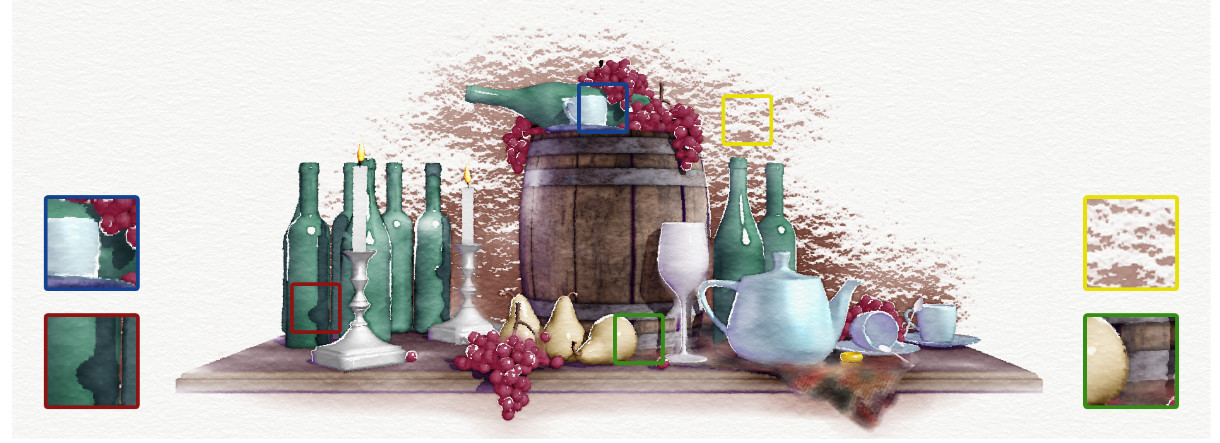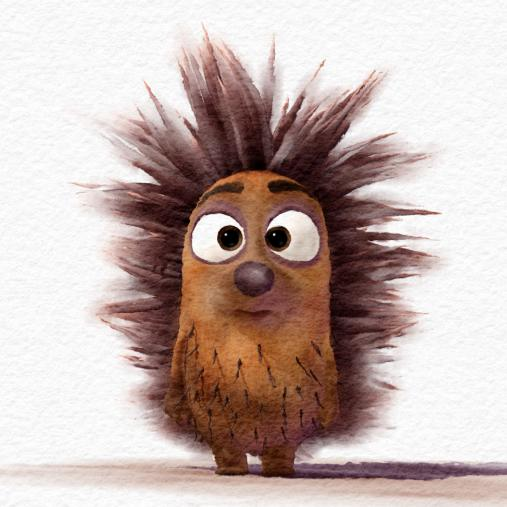Section: New Results
Expressive rendering
Edge- and substrate-based effects for watercolor stylization
Participants : Santiago Montesdeoca, Hock Soon Seah, Pierre Bénard, Romain Vergne, Joëlle Thollot, Hans-Martin Rall, Davide Benvenuti.
|
We investigate characteristic edge-and substrate-based effects for watercolor stylization. These two fundamental elements of painted art play a significant role in traditional watercolors and highly influence the pigment's behavior and application. Yet a detailed consideration of these specific elements for the stylization of 3D scenes has not been attempted before. Through this investigation, we contribute to the field by presenting ways to emulate two novel effects: dry-brush and gaps & overlaps. By doing so, we also found ways to improve upon well-studied watercolor effects such as edge-darkening and substrate granulation. Finally, we integrated controllable external lighting influences over the watercolorized result, together with other previously researched watercolor effects. These effects are combined through a direct stylization pipeline to produce sophisticated watercolor imagery (see Figure 2), which retains spatial coherence in object-space and is locally controllable in real-time. This work has been published in Expressive'2017 [9].
Direct 3D stylization pipelines
Participants : Santiago Montesdeoca, Hock Soon Seah, Pierre Bénard, Romain Vergne, Joëlle Thollot, Hans-Martin Rall, Davide Benvenuti.
Using 3D computer graphics to emulate watercolor presents a special challenge. Complex stylizations are commonly processed offline, by combining multiple passes in compositing, where art directing is slow and non-intuitive because the stylized result is not immediate. This direct 3D stylization pipeline allows art direction to happen in real time (Figure 3). Using the framework, artists can assign their desired local and global effects directly in the 3D scene, see the stylized results immediately, and intuitively adapt them to fit their stylized vision. The technique can be used and applied in 3D animations, games, VR, visualizations, illustrations, and interactive art. This work was presented at the SIGGRAPH real-time live session [13].




